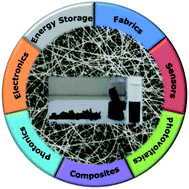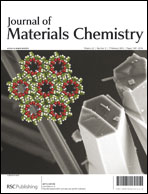In this study, a direct liquid-injection metal–organic chemical vapor deposition (LIMOCVD) is developed as a novel synthetic method for high-yield, large-scale synthesis of Ge nanowiresvia vapor–liquid–solid (VLS) growth at temperatures ranging from 390 to 480 °C at atmospheric pressure. Among the precursors tested, including diphenylgermane (DPG), n-butylgermane (NBG), and tetraethylgermane (TEG), DPG exhibited the most suitable reactivity for LIMOCVD nanowire reactions. While using DPG as a precursor, the yields of Ge nanowires by VLS growth can reach up to ∼30%. As a proof-of-concept for scale-up synthesis, sub-gram quantities of Ge nanowires were produced by consecutive injections of precursor solution. The Ge wires were passivated by an alkanethiol monolayer which gives rise to stability, oxidation resistance and significantly improved dispersibility in organic solvents. Nanowire solutions could be used as inks for applications in many fields. For example, bendable, thickness-tunable Ge nanowire fabrics were fabricated from the inks. The LIMOCVD-VLS growth could potentially serve as a facile and reliable method for industrial-scale production of Ge nanowires due to its superior synthetic capacity and low manufacturing cost.

You have access to this article
 Please wait while we load your content...
Something went wrong. Try again?
Please wait while we load your content...
Something went wrong. Try again?


 Please wait while we load your content...
Please wait while we load your content...